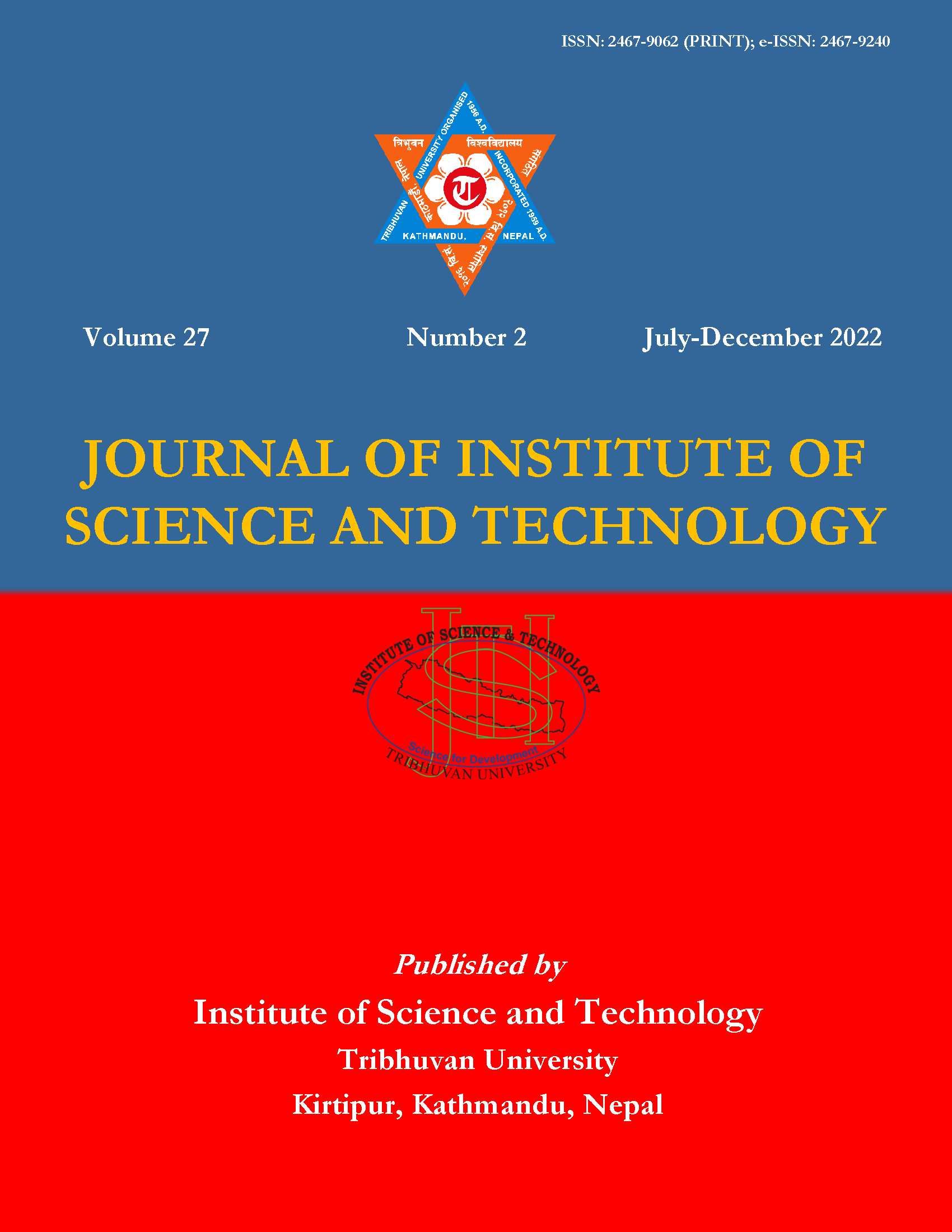Macrofungal Diversity of Brahakshetra Community Forest, Ghorahi, Dang, Nepal
DOI:
https://doi.org/10.3126/jist.v27i2.51359Keywords:
Ectomycorrhizal, edible, environmental variable, positive trendAbstract
Fungi are a diverse group of organisms ranging from microscopic to macroscopic mushrooms. Being a major group of decomposers, they are essential for the survival of other organisms in the ecosystem and important for the degradation of organic matter. The main aim of this study was to study the macrofungal diversity of Brahakshetra Community Forest, Ghorahi, Dang. The forest is mainly dominated by Shorea robusta and other associated species. The study was made from June to September 2020. The sampling was done by using a 10×10m quadrate in a line transect and each plot was divided into 5×5m quadrats and samples were collected during the rainy season from different habitats of the forest. Mushrooms were photographed in their natural habitat and preserved in dry and liquid preservation. The specimens were identified by examining their macroscopic and microscopic features, and also by using references from standard literature and websites. In the study, a total of 66 species were recorded under 30 genera belonging to 21 families, and 8 orders. Among them, 65 belong to basidiomycetes and 1 belongs to Ascomycetes. Agaricales was found as the largest order followed by Russulales and Boletales. The diversity indices, the Shannon Weiner index and Simpson diversity index were found to be 3.59 and 0.93 respectively. The result of this study concludes that the Brahakshetra Community Forest was rich in macrofungal diversity, especially ectomycorrhizal. There were positive trends between species richness of macrofungi and environmental variables, i.e., tree canopy, soil pH, soil moisture, and leaf litter which means species increased with increasing these environmental variables.
Downloads
Downloads
Published
How to Cite
Issue
Section
License
Copyright (c) 2022 Institute of Science and Technology, T.U.

This work is licensed under a Creative Commons Attribution-ShareAlike 4.0 International License.
The views and interpretations in this journal are those of the author(s). They are not attributable to the Institute of Science and Technology, T.U. and do not imply the expression of any opinion concerning the legal status of any country, territory, city, area of its authorities, or concerning the delimitation of its frontiers of boundaries.
The copyright of the articles is held by the Institute of Science and Technology, T.U.




